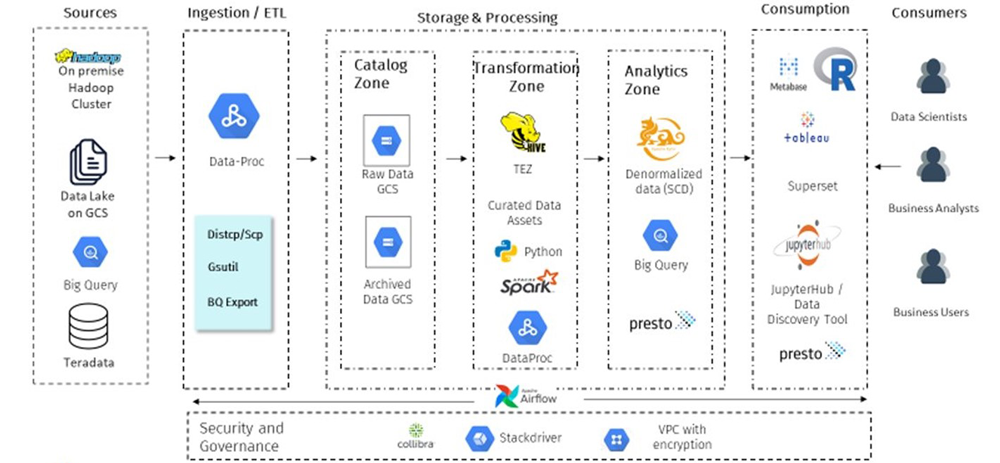

One of the world’s largest retailers wanted to better understand its customers to provide enhanced customer service, experience and gain better visibility into customer demands to better forecast the organization’s future needs.
The client’s previous analytics efforts were limited to business intelligence and analyzing historical data for years. This was due to compute constraints within their on-premises environment, despite the significant investment in large Hadoop and Teradata environments.
As a result, they could not progress in advanced analytics and customer insights until Tredence worked with them to design and implement a large-scale analytics environment on the Google Cloud Platform (GCP).
The client’s existing on-premises technology could not support the analytics capabilities required to build the advanced machine learning algorithms they needed to gain actionable insights.
The demand for legacy hardware was always high, and the capacity to support new, large-scale analytical workloads did not exist.
Enter GCP.
Tredence collaborated with the client for several months to build a new hybrid platform that leveraged the power of Google’s Cloud to enable never-before-achieved analytical capabilities.
The primary objective was to create a holistic data environment with a wide range of data elements about individual customers and their interactions with the retailer. These included web, store, app, transactional, demographic, and other data sources from many systems.
By tying each of these source systems together into a single analytical environment, we could all create new insights about this retailer’s customers that could be used in many different business processes and applications, including:
As part of its customer data analytics, the client has been on a path to modernize its IT infrastructure investments on the cloud platform. Before modernizing its customer analytics solution and engaging with Tredence, the retailer has been utilizing Teradata DB and its homegrown MapR solutions to manage customer-related data and generate insights.
The client’s Customer Org within their enterprise is responsible for identifying customer journeys, segmentation, and valuation of various customers based on their purchase patterns, revenue, and loyalty and providing valuable business insights for better business decisions.
Tredence worked with the customer to design and implement a large-scale, hybrid on-prem and cloud solution using the Google Cloud Platform. The solution was designed for data scientists and data analysts creating hundreds of algorithms to drive their business using GCP services like Dataproc and Google BigQuery.
The Customer Insights Platform, as it came to be known, ingested processed data from the customer’s large on-premise Hadoop environment and stored this data in GCS. Tools like BigQuery, Tableau, Jupyter, Presto, and others allowed data scientists and analysts to work using scalable compute environments that could match the demands of large-scale machine learning workloads.
The diagram below showcases the solution architecture for the platform.

Our solution addressed several of the client’s key challenges in building a holistic view of customer data:
We used several services native to the GCP, in addition to a variety of 3rd party solutions already in use across the organization, including Tableau, Jupyter, and others. With respect to GCP, the following services were included in the original solution architecture on GCP. Over time, those services have continued to improve and evolve, but they largely remain the same today.
The Customer Insights Platform has been a landmark achievement for the client, a solution that has enabled them to understand their customer in ways they could not imagine a few years ago. The solution exists today with hundreds of users who regularly feed valuable insights across the organization about their customers. Therefore, they can optimize many parts of the customer experience, driving value from acquisition and beyond.
On the platform side, the Customer Insights Platform has several achievements:

The UDP since its inception has been processing 250 TBs (Terabytes) of data weekly

Overall reduction of processing time in computation-intensive jobs by 70 percent

Overall costs reduced by 30-35 percent